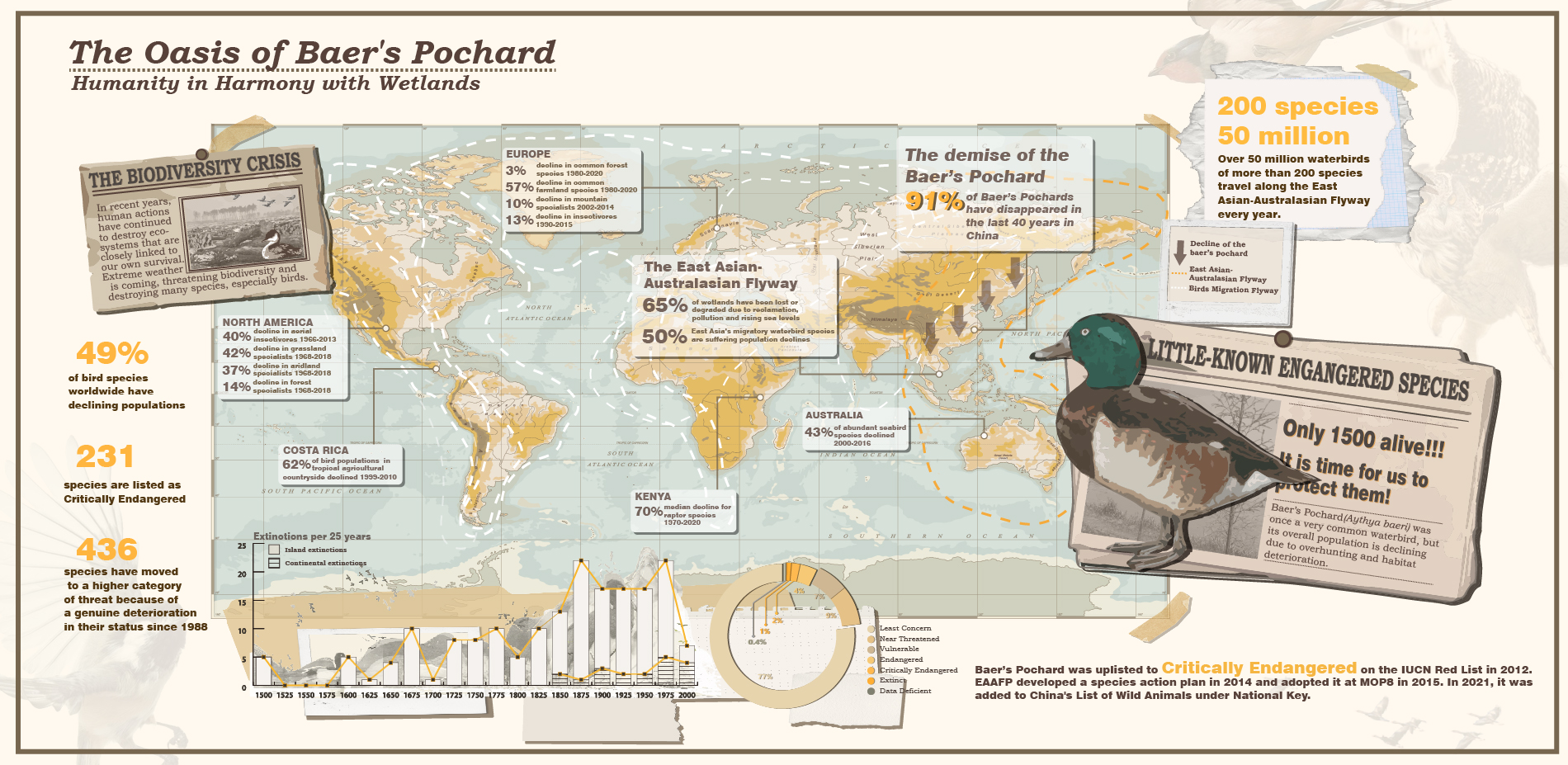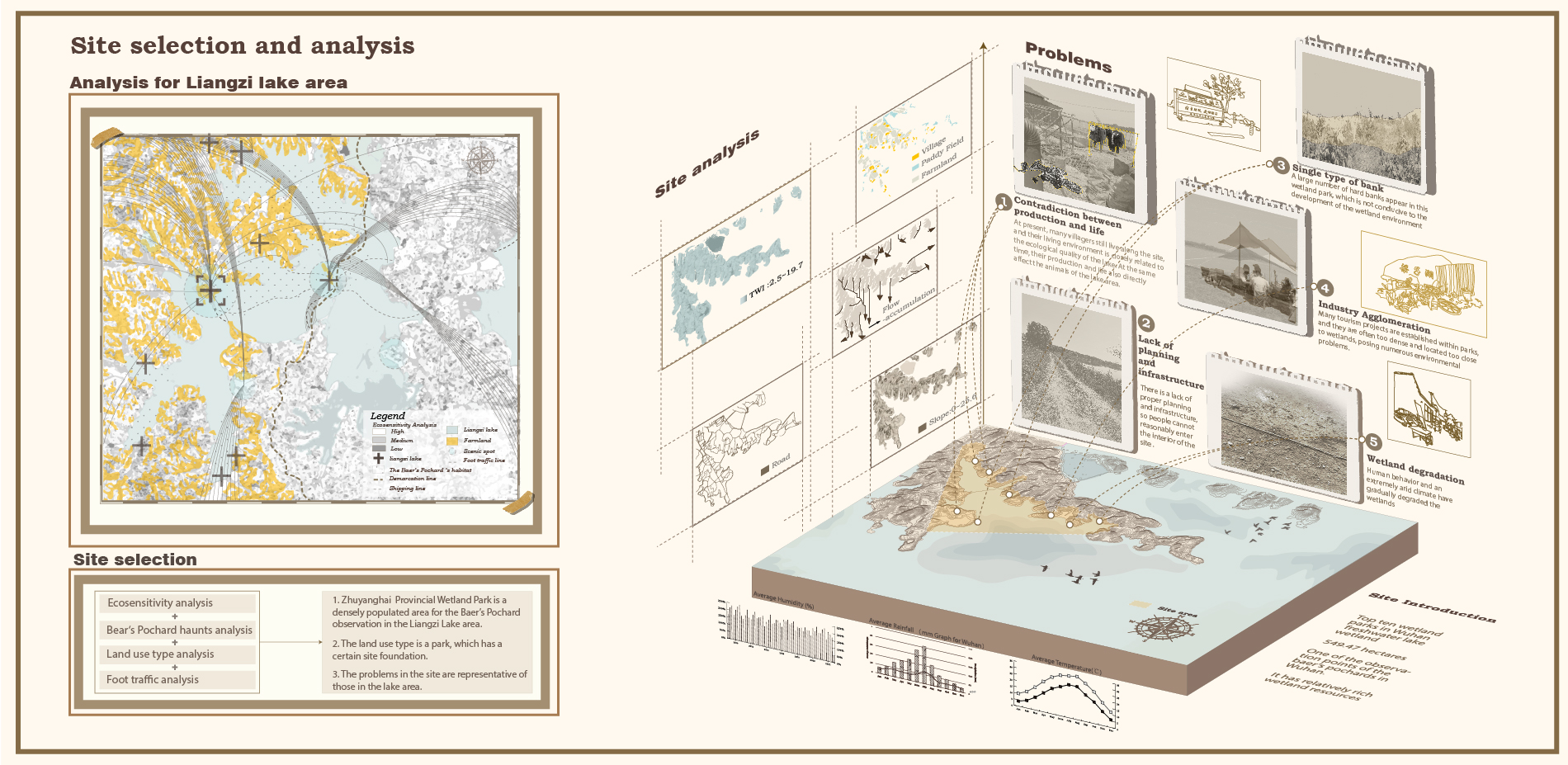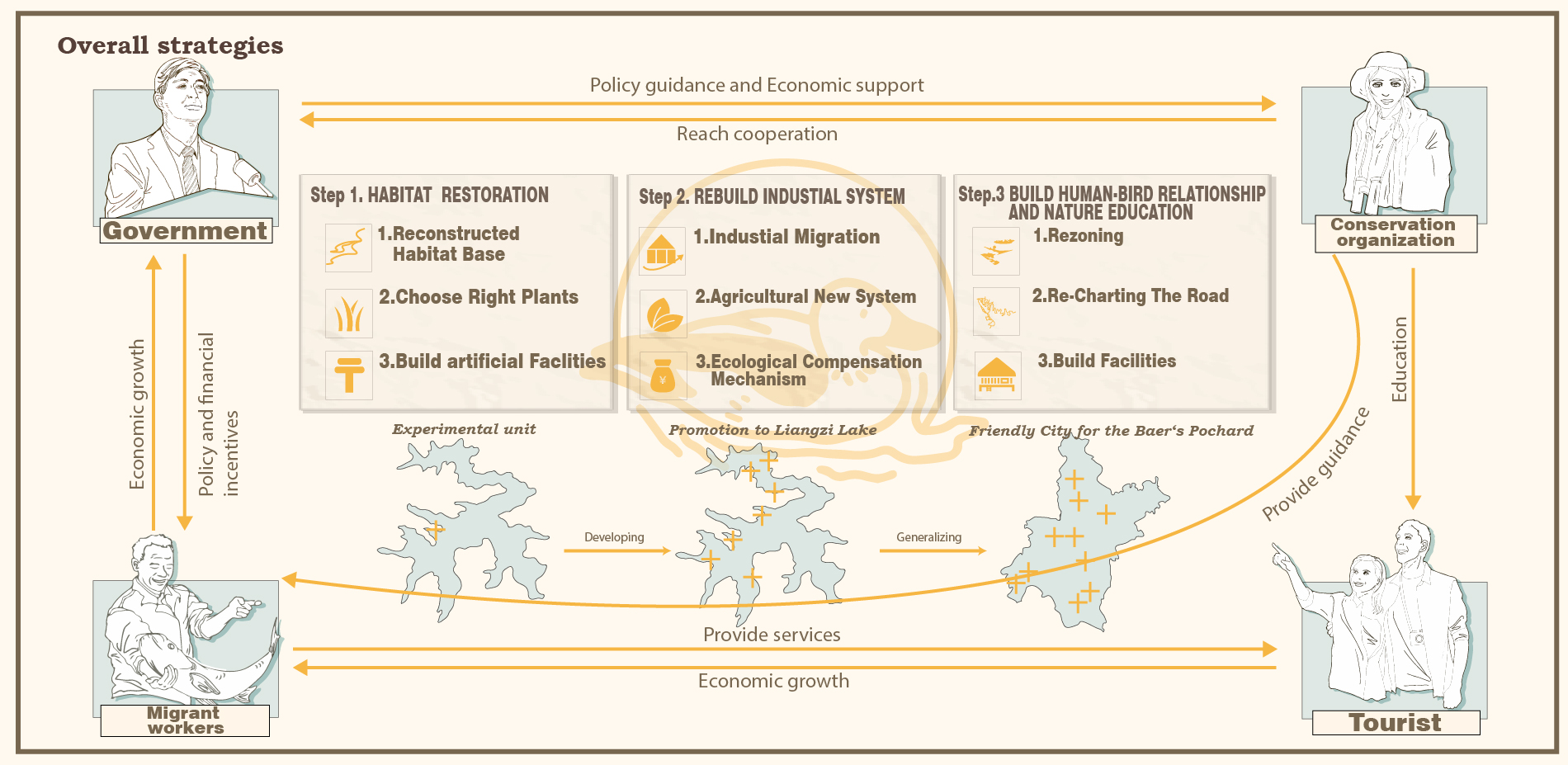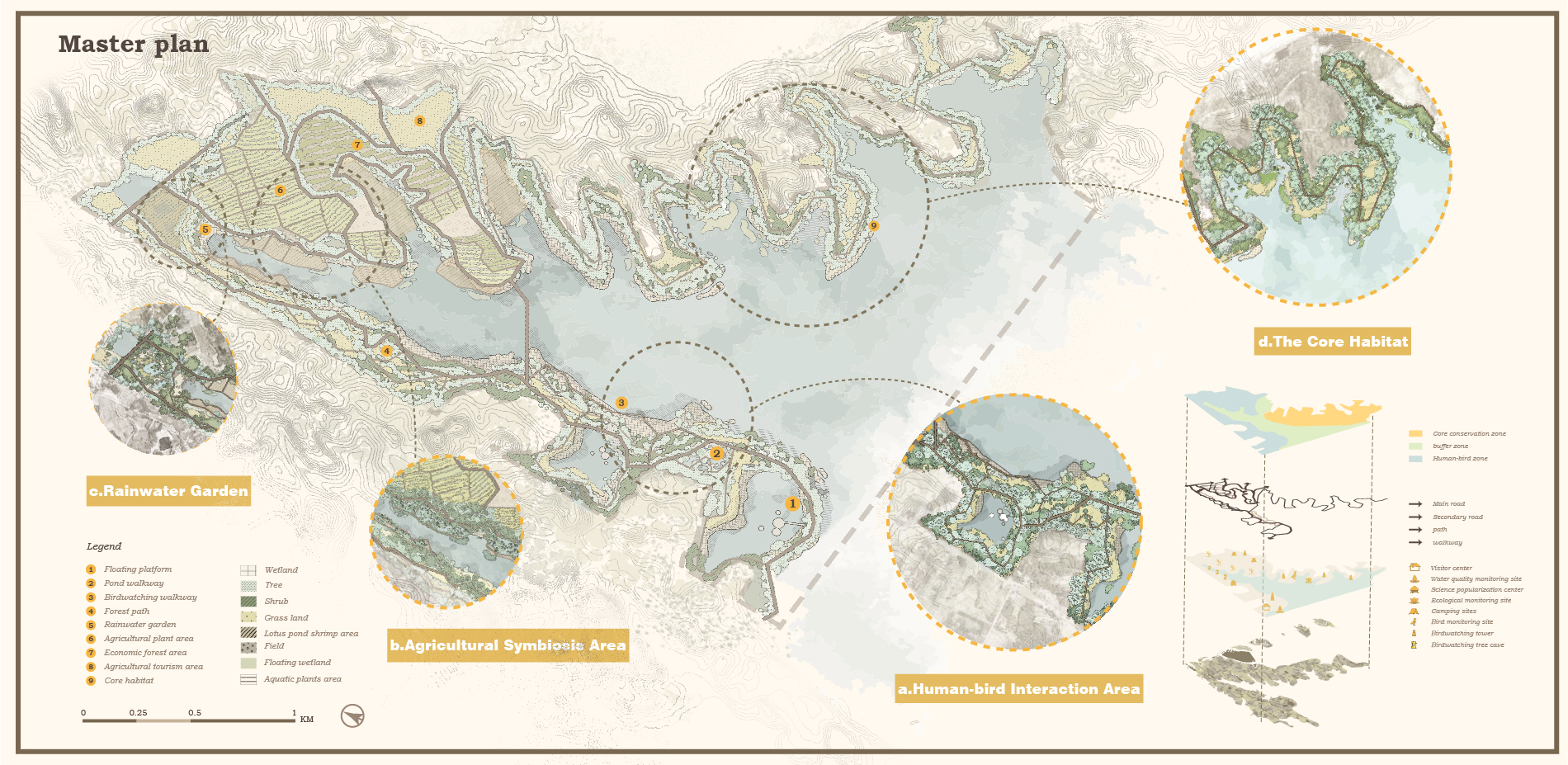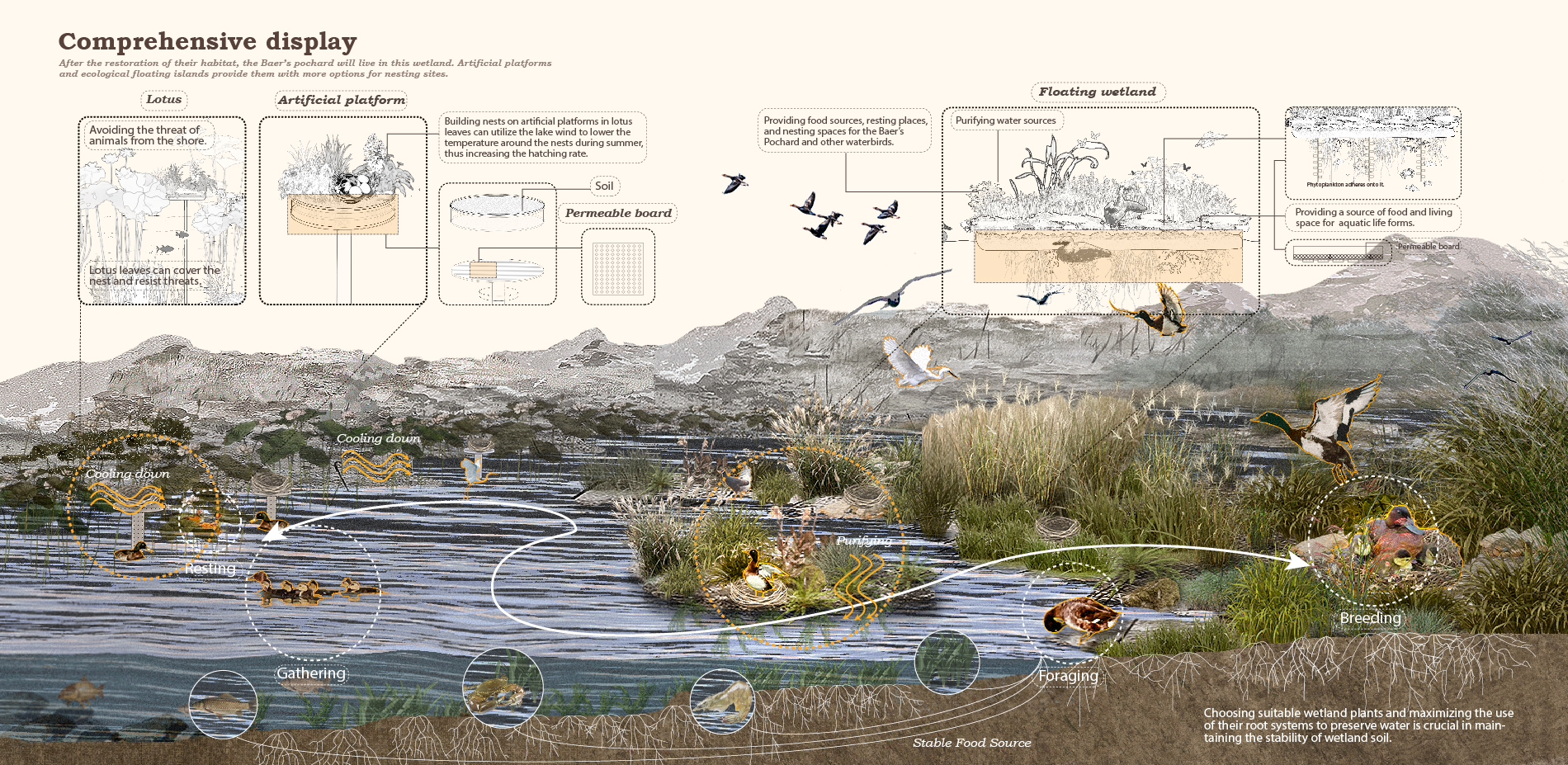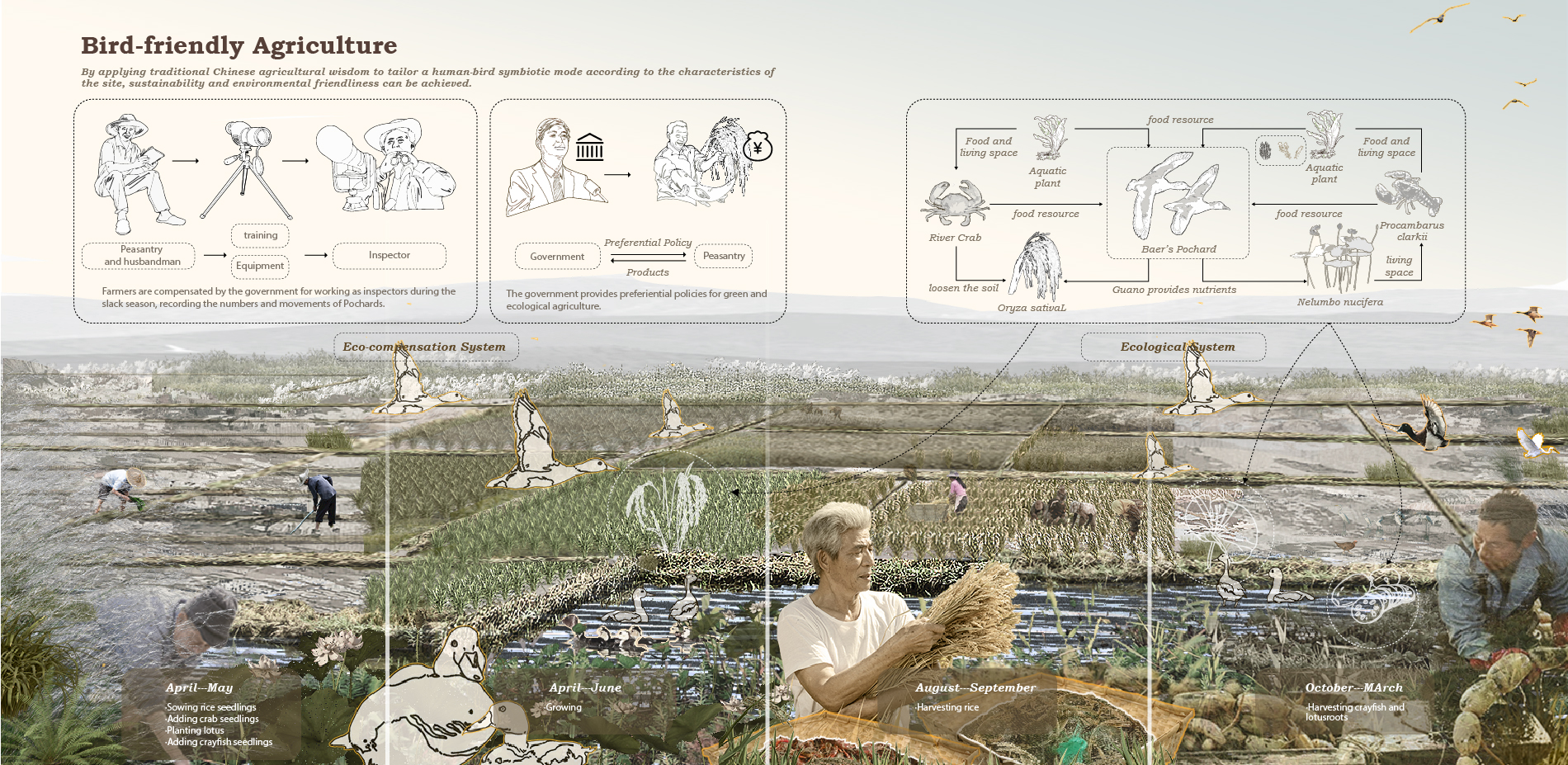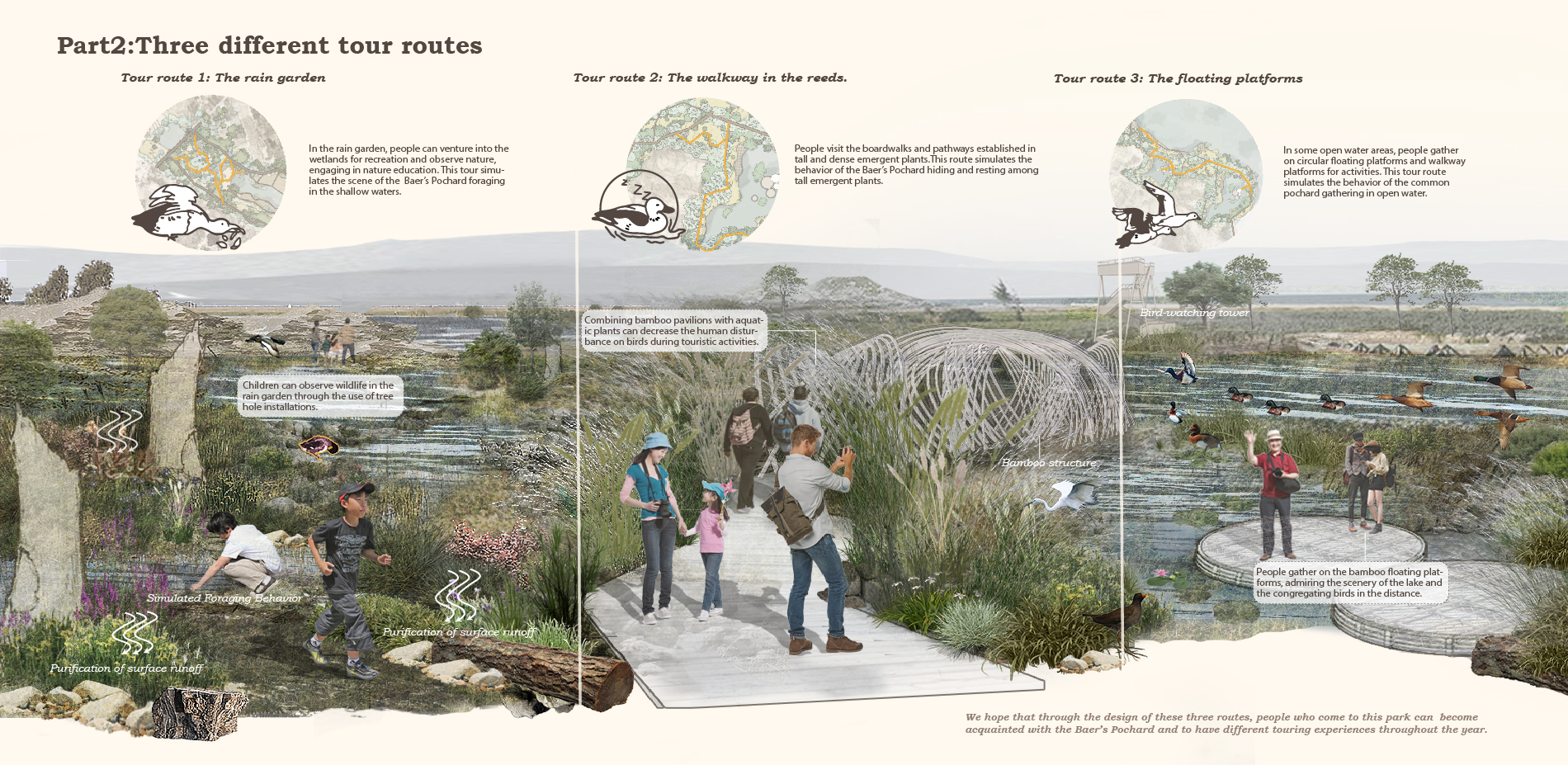The Oasis of Baer's Pochard: Humanity in Harmony with Wetlands
Honor Award
General Design
Wuhan, Hubei, China
Yaqi Liu, Student International ASLA;
Zijing Wan;
Ruoshui Wang;
Xiangyi Wang, Student International ASLA;
Faculty Advisors:
Shiyi Guo;
Yan Zhou;
Wuhan University / Huazhong Agricultural University
Using an individual species as the protagonist in a story about wetland restoration and conservation efforts was a compelling approach. At the center of a complex ecological system, positioning Baer's pochard as a relatable character made learning about the biodiversity crisis impacting its very existence personal and emotional. Clear graphics told the story in a relatable way, and the jury especially appreciated how the tour routes for people through the landscape mirrored the life of this enigmatic species.
- 2023 Awards Jury
Project Statement
Human activities pose a tremendous threat to the planet's biodiversity. It is crucial to explore how to balance ecology and industry.This project focuses on the critically endangered species of Baer's pochard. We have chosen a typical wetland park in Wuhan, the southernmost breeding ground of the species, situated in an area where traditional agriculture conflicts with nature conservation. We propose a comprehensive strategy to address the needs of various stakeholders, including how to conserve the Baer's pochard and increase its population while utilizing traditional Chinese farming wisdom to maximize economic benefits for local residents and achieve sustainable development. The strategy also involves redesigning the wetland park.
Project Narrative
Birds are the most severely affected population in the biodiversity crisis and they are closely related to humans. The main source of the bird crisis is the various environmental destruction caused by human irrational development. Living in Wuhan, which has rich wetland resources but has always faced urban development and ecological conflicts, we hope to find a balance between industry and ecology from the perspective of birds here. While avoiding the homogenization of urban form, we will shape an ecological image with historical heritage by exploring local ecological features to promote sustainable development of society, economy and ecology. The focal species method is the most commonly used research method for protecting birds today, and this project also relies on it to choose the protagonist, the little-known but endangered Baer’s Pochard. Due to wetland degradation and large-scale hunting, Baer’s Pochard has declined sharply in number over the past forty years. Today, there are only about 1,500 left in the world. China, as its main distribution area, must take action to protect it urgently. The project is located in Liangzi Lake Puyanghai Provincial Wetland Park in Wuhan. As the southernmost breeding ground for Baer’s Pochard in the world, Wuhan is also known as China’s wetland city and has long faced problems between urban industrial development and ecological wetland protection. Liangzi Lake is the area where Baer’s Pochard is most frequently observed in Wuhan city. As a traditional agricultural area locally, the contradiction between agriculture and ecology is more prominent. After multiple inspections, we believe that this park with typical local contradictions and undergoing wetland degradation is suitable as our foothold for completion.
1. Ecological strategy: Based on Baer's pochard's habits, we design four ecological models: shallow beach lotus pond, pond and open water area. We restore, transform and add wetlands on site and create artificial platforms for nesting.
2. Industrial strategy: We relocate tourism industry to minimize wetland impact and design two agricultural systems: lotus shrimp symbiosis and rice crab symbiosis. We use traditional farming wisdom and local aquatic products to protect birds and generate economic benefits. We also design ecological compensation mechanisms for sustainable development.
3. Human-bird coexistence strategy: We want the wetland park to be a place for tourism and education where people can observe and understand Baer's pochard. We divide the park into three areas: human-bird coexistence area, buffer zone and core conservation area. We open the core area gradually as the bird population recovers. We design three tour routes: rainwater garden, stack road and floating platform to simulate Baer's pochard's life. We use sustainable facilities in the park.
The renovated wetland park will become a model example, and its strategies will be gradually extended to other areas of Liangzi Lake over time, and eventually to all the wetlands in Wuhan where Baer’s pochard can be found. We hope that Wuhan will eventually become a turning point for the status quo of Baer’s pochard, and make it a true city card of Wuhan.
Plant List:
- Eichhornia crassipes
- Nymphaea
- Oenanthe
- Persicaria amphibia
- Ipomoea aquatica
- Salvinia
- Phragmites
- Typha
- Zizania
- Acorus
- Eleocharis
- Nelumbo nucifera
- Nelumbo sp.
- Salix
- Populus
- Paulownia
- Prunus persica
- Rhododendron
- Aster
- Nymphaea tetragona
- Trapa natans
- Glycine soja
- Ceratopteris thalictroides
